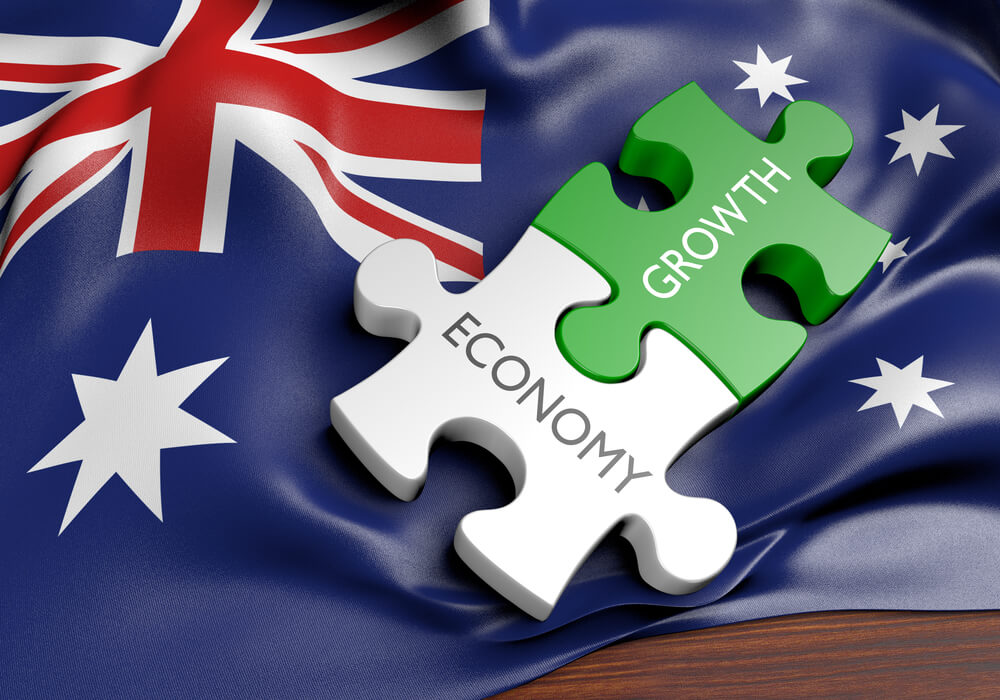Today I want to cover economic growth.
Not the big yawn that we had to put up with over the last week or so – GDP this, chain volume measure that - but some simple stuff, like where does economic growth take place and in what places
To me this important when it comes to housing investment as I think you want to future proof your investments as much as you can and buying in a location that has a lot of economic activity, and especially in a locale where the economy action is expanding, is maybe a wise thing to do.
Let's start wide and look at the states and territories.
Here are two tables and a chart.
Economic size (2017)
| State/Territory | Size of economy $A billions |
% share of Australian economy |
| New South Wales | 565 | 32% |
| Victoria | 438 | 25% |
| Queensland | 335 | 19% |
| Western Australia | 204 | 12% |
| South Australia | 112 | 6% |
| ACT | 48 | 3% |
| Tasmania | 32 | 1.5% |
| Northern Territory | 30 | 1.5% |
| Australia | 1,764 | 100% |
Recent annual growth (2013 to 2017)
| State/Territory | 2013 | 2014 | 2015 | 2016 | 2017 |
| New South Wales | 0.9% | 3.6% | 3.3% | 4.8% | 3.0% |
| Victoria | 2.9% | 3.2% | 4.7% | 3.7% | 4.3% |
| Queensland | 2.4% | -4.9% | -1.8% | 3.4% | 2.6% |
| Western Australia | -2.4% | -1.4% | -4.6% | -7.8% | 1.2% |
| South Australia | 0.6% | 1.4% | 1.6% | 2.0% | 4.8% |
| ACT | 0.1% | -1.5% | 0.2% | -0.2% | 1.6% |
| Tasmania | 1.3% | 0.8% | 3.1% | 0.4% | 4.7% |
| Northern Territory | -0.7% | -4.4% | -8.0% | 5.8% | -2.8% |

Comments
Our economy is concentrated in just a few places.
Some areas are growing, others not.
Queensland, Western Australia, South Australia and Tasmania appear to be improving, when it comes to economic growth.
Queensland’s economic outlook appears now to be gaining ground on New South Wales and Victoria.
This, in turn, should translate to higher levels of migration, both from interstate and from overseas.
For mine, however, the jury is still out as to how much this will influence the Queensland housing market and whether or not, more bums on seats in the south-east corner of the state, is really a good thing.
And for those that want to know such things, the figures in this post are from ABS catalogue no 5206.0, table 25, state final demand, chain volume measures, seasonally adjusted. Yawn.
The big 4 areas of economic growth
The following long table outlines the top 25 urban areas across the country with regards to economic size.
Top 25 urban areas by economic size
| Rank | Urban area |
State or territory | Size of economy $A billions |
% share of Australian economy |
| 1 | Sydney | NSW | 401 | 24.1% |
| 2 | Melbourne | Vic | 304 | 18.3% |
| 3 | Brisbane | Qld | 158 | 9.5% |
| 4 | Perth | WA | 149 | 9.0% |
| 5 | Adelaide | SA | 78 | 4.7% |
| 6 | Canberra | ACT | 36 | 2.2% |
| 7 | Gold Coast/Tweed | Qld/NSW | 35 | 2.1% |
| 8 | Newcastle | NSW | 30 | 1.8% |
| 9 | Sunshine Coast | Qld | 17 | 1.0% |
| 10 | Townsville | Qld | 17 | 1.0% |
| 11 | Mackay | Qld | 16 | 1.0% |
| 12 | Wollongong | NSW | 14 | 0.8% |
| 13 | Hobart | Tas | 13 | 0.8% |
| 14 | Geelong | Vic | 12 | 0.7% |
| 15 | Toowoomba | Qld | 10 | 0.6% |
| 16 | Darwin | NT | 10 | 0.6% |
| 17 | Cairns | Qld | 9 | 0.5% |
| 18 | Rockhampton | Qld | 8 | 0.5% |
| 19 | Launceston | Tas | 6 | 0.4% |
| 20 | Gladstone | Qld | 5 | 0.3% |
| 21 | Ballart | Vic | 5 | 0.3% |
| 22 | Bendigo | Vic | 5 | 0.3% |
| 23 | Albany/Wodonga | Vic/NSW | 5 | 0.3% |
| 24 | Bunbury | WA | 5 | 0.3% |
| 25 | Bundaberg | Qld | 4 | 0.2% |
Comments
Our economy is really concentrated in just a few places.
The 25 urban areas in the table hold over 80% of our economic activity.
When you combine south east Queensland ($220 billion or about 14% of Australia’s economy) with Sydney, Melbourne and Perth, these four major urban areas hold two-thirds of the Australian economic activity.
That is why – as we have outlined in recent months – most of the future population growth and new job creation is very likely to be confided to these four areas.
Unless we decentralise our economy, spend big time on new infrastructure in the big four or reduce our migration intake, then Sydney, Melbourne, SEQld and Perth are going to become much more congested and expensive.
When taking a wider view, this is happening around the globe – the rise of the mega city – and this trend is expected to accelerate in the future.
The challenges are big but not unsurmountable.
Importantly what are the impacts on housing and where are the opportunities given this scenario?
















